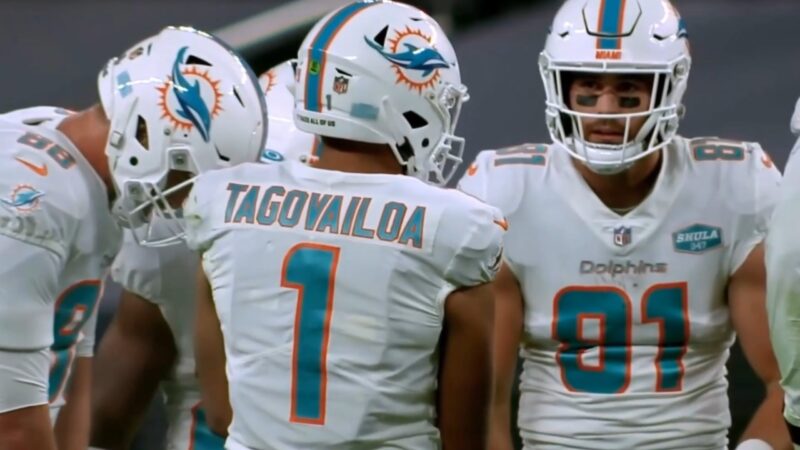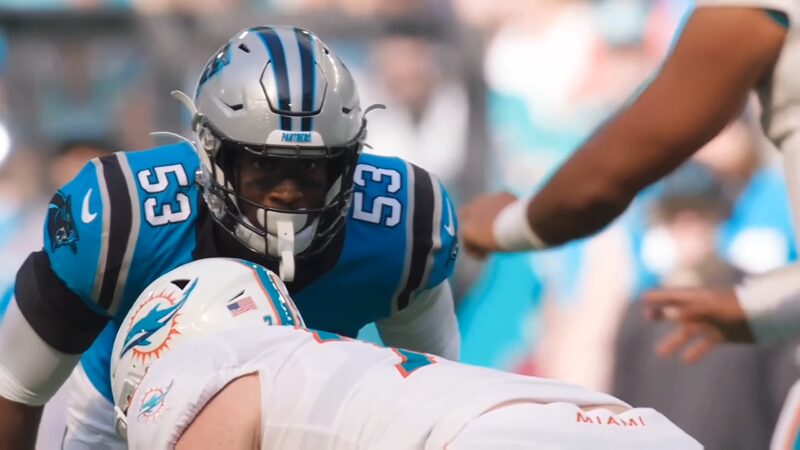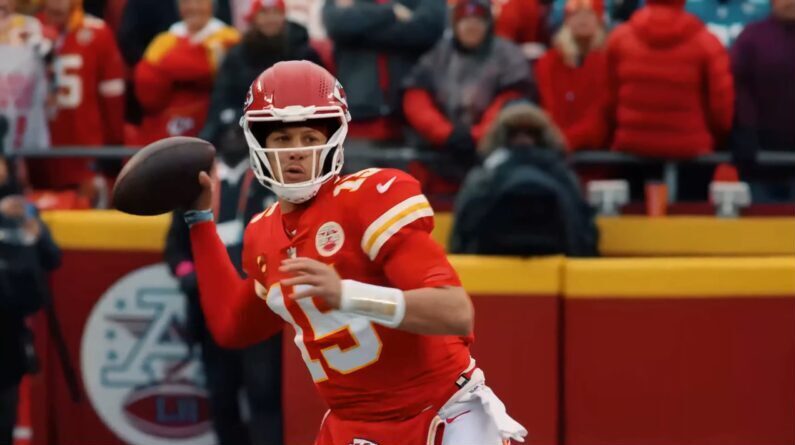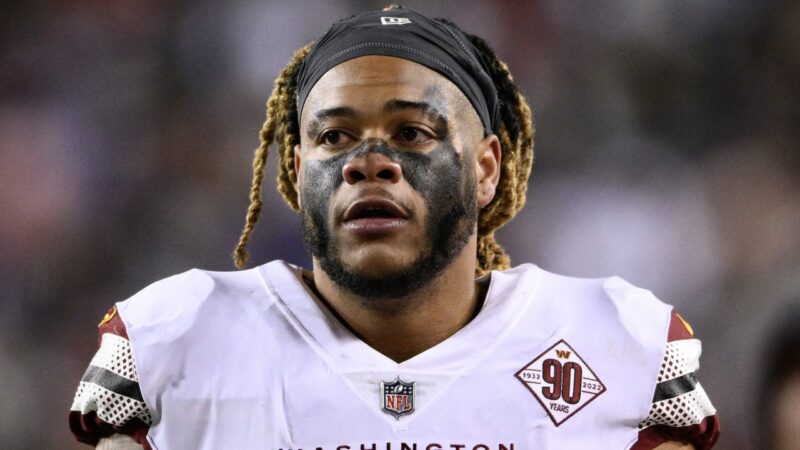Whether you’re a die-hard NFL fan, a rookie player, or someone who’s just trying to understand the complexities of NFL contracts, this blog post is for you.
When a player is drafted into the NFL, they sign a rookie contract with the team that drafted them. These contracts are standardized and have specific terms that both the player and the team must adhere to.
Understanding rookie contracts is crucial for both players and fans. For players, it’s about knowing their worth and their obligations. For fans, it helps in understanding team strategies and player movements.
What is the Fifth-Year Option?

A Quick Overview
The Fifth-Year Option is a clause in the rookie contracts of first-round draft picks. This clause allows the team to extend the player’s contract for a fifth year, beyond the standard four-year term.
Why Teams Use It
Teams use this option to retain talent and have more control over their roster. It’s a way to keep a promising player in the fold for an additional year without negotiating a new contract.
The Pre-2020 Terms
Automatic Inclusion
Before the changes in 2020, every player selected in the first round of the NFL Draft automatically had a Fifth-Year Option added to their contract. This wasn’t something that could be negotiated separately.
Timeframe for Exercise
The team had a specific timeframe to exercise this option. They had to inform the player between the last regular-season game of his third contract year and May 3 of the next League Year.
Changes Made During the 2020 CBA Negotiations
What Changed?
The 2020 Collective Bargaining Agreement (CBA) brought some changes to the Fifth-Year Option. While the core concept remains the same, there are nuances that both teams and players should be aware of.
Why It Matters
These changes can affect the dynamics between players and teams. Understanding them is crucial for contract negotiations and long-term planning for both parties.
How the Fifth-Year Option Works
The Mechanics
Once a team decides to exercise the Fifth-Year Option, it becomes guaranteed for injury only. This means if the player gets injured, they will still receive their salary. However, if the player is on the team’s roster at the start of the League Year in his option season, his salary becomes fully guaranteed for skill, cap, and injury.
The Financial Side
The payments made during the fifth year are not considered Rookie Salary and do not count toward league or club rookie pools or allocations. This is a separate entity in the financial structure of a team.
Benefits for Teams

Roster Control
The Fifth-Year Option gives teams an extra year of control over a player. This is especially beneficial if the player has been performing well but the team is unsure about committing to a long-term contract.
Financial Flexibility
Teams also benefit financially as they can delay the cap hit that comes with a new, likely more expensive, contract. This allows them more room to maneuver under the salary cap.
Benefits for Players
Financial Security
For players, the Fifth-Year Option provides some level of financial security. If the option is exercised, they are guaranteed a salary for the fifth year, at least for injury.
Leverage for Negotiation
If a player performs exceptionally well in their first four years, the Fifth-Year Option can serve as a leverage point for negotiating a more lucrative long-term deal either with the current team or as a free agent.
The Non-Negotiable Nature of the Option
It’s Set in Stone
The Fifth-Year Option is non-negotiable. This means that the terms from a player’s rookie contract, excluding certain prohibited terms, will be transferred to the fifth year without any room for discussion.
Implications for Players
For players, this means that they have less control over the terms of their fifth year. It’s a take-it-or-leave-it situation, which can be limiting in some cases.
Prohibited Terms
What’s Not Allowed
Many terms that are allowed in other types of NFL contracts are not permitted in the Fifth-Year Option. These include Option Bonuses, Option Exercise Fees, Option Non-Exercise Fees, Option Buyouts, and other similar compensations.
Why It’s Important
Understanding what is and isn’t allowed can help both players and teams plan better. It sets clear boundaries on what can be expected in the fifth year.
Guarantees: Injury, Skill, Cap
The Types of Guarantees
When a team exercises the Fifth-Year Option, the player’s salary becomes guaranteed for injury only. However, if the player remains on the team’s roster at the start of the League Year in his option season, the salary becomes fully guaranteed for skill, cap, and injury.
Why Guarantees Matter
These guarantees provide a safety net for players, ensuring they get paid even if they’re injured or if their performance dips. For teams, it’s a commitment that comes with its own set of risks and rewards.
Financial Implications
For the Team
The salary for the Fifth-Year Option does not count toward the rookie salary pool, giving the team some financial flexibility. However, it’s a cost that teams have to account for, especially when managing the salary cap.
For the Player
Players should note that the salary for the fifth year is the only payment they’re eligible to receive for football services during that year, outside of minimum offseason workout per diems and compensation for non-football related team activities.
The 25% Rule
The 25% Rule states that a player’s salary cannot increase by more than 25% year-over-year. However, the Fifth-Year Option is not subject to this rule, giving teams more flexibility in structuring contracts.
Salary Calculation for Top-Ten Picks
For players selected in the top-ten picks, the salary for the Fifth-Year Option is set at an amount equal to the Transition Tender for the player’s fourth contract year. This is calculated by averaging the top ten highest Prior Year Salaries for players at the same position.
Why It’s Important
This usually results in a higher fifth-year salary for top-ten picks, making it a more attractive option for players but a pricier commitment for teams.
Salary Calculation for 11th-32nd Picks
The Formula
For players picked between 11th and 32nd, the salary is calculated by averaging the 3rd-25th highest Prior Year Salaries for the player’s position. This is generally lower than the salary for top-ten picks.
What It Means
This makes the Fifth-Year Option less financially burdensome for teams but also less lucrative for players, affecting how both parties approach the option.
The Role of Position in Salary Calculation
Position Matters
The salary for the Fifth-Year Option is also influenced by the player’s position, defined by where they spent the most plays during the previous season.
The Impact
This can have significant financial implications. For example, a player who switches from a less lucrative position to a more lucrative one could see a substantial increase in their fifth-year salary.
Offseason Workout Per Diems
What Are They?
During the offseason, players can earn additional money through workout per diems. These are small daily payments made to players for participating in team-organized workouts.
How They Relate to the Fifth-Year Option
It’s important to note that these per diems are the only additional payments a player can receive during their fifth-year option, outside of their salary. This can be a minor but crucial detail for players when considering their overall earnings.
Non-Football Related Team Activities
Players can also earn extra money through non-football-related team activities. These could be promotional events, community outreach, or other activities organized by the team.
The Catch
Just like the offseason workout per diems, these are the only other forms of compensation a player can receive during their fifth year, aside from their salary. Knowing this can help players make more informed decisions.
The Risk Factor for Players
The Downside
While the Fifth-Year Option provides some financial security, it also comes with risks for players. For instance, poor performance or injuries during the fifth year could potentially lower their market value.
Balancing Act
Players need to weigh the immediate financial security against the long-term implications. It’s a balancing act that requires careful consideration and, often, consultation with agents and financial advisors.
Famous Cases

Notable Examples
There have been several high-profile cases where the Fifth-Year Option played a significant role. Examples include players like Patrick Mahomes and Jalen Ramsey, whose fifth-year options were picked up and led to lucrative long-term contracts.
Lessons Learned
These cases serve as examples of how the Fifth-Year Option can be a stepping stone to a more lucrative career, but they also show that it’s not a guarantee of long-term success.
The Role of Agents
Negotiation and Advice
While the Fifth-Year Option is non-negotiable, agents play a crucial role in advising players on how to approach it and what steps to take if the option is exercised.
Behind the Scenes
Agents also work behind the scenes to gauge the market and negotiate potential long-term contracts, either with the current team or with other teams if the player is allowed to enter free agency.
Frequently Asked Questions (FAQ)
Can a team revoke the Fifth-Year Option once it’s exercised?
No, once a team exercises the Fifth-Year Option, it becomes binding. However, the salary is initially guaranteed for injury only, becoming fully guaranteed if the player is on the roster at the start of the League Year in the option season.
What happens if a player is traded?
If a player is traded, the Fifth-Year Option goes along with them to the new team. The new team will have the same rights and obligations concerning the option as the original team.
Can a player decline the Fifth-Year Option?
No, the player cannot decline the Fifth-Year Option. It’s a non-negotiable part of first-round rookie contracts.
Is the Fifth-Year Option applicable for players drafted in rounds other than the first?
No, the Fifth-Year Option is exclusive to players selected in the first round of the NFL Draft.
Can the Fifth-Year Option be renegotiated?
The terms of the Fifth-Year Option are set and cannot be renegotiated. However, the team and player can agree to a separate, long-term contract that would override the Fifth-Year Option.
Final Words
We’ve journeyed through the intricacies of the NFL’s Fifth-Year Option, covering its mechanics, financial implications, and strategic elements. Whether you’re a player, a team executive, or a fan, understanding this unique contract clause is crucial. It shapes careers, influences team strategies, and even affects how we, as fans, engage with the sport we love.
